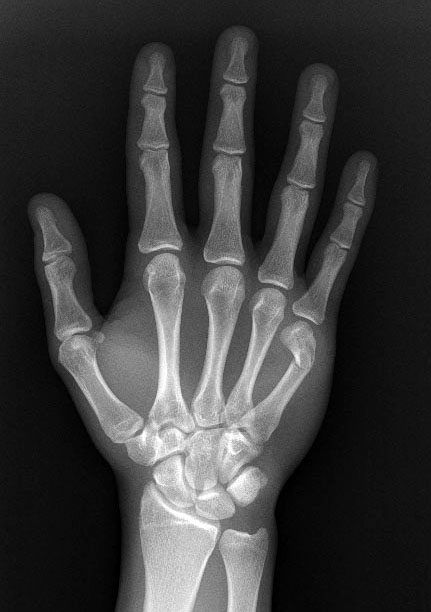

The Boxer’s fracture is a fracture involving the fifth metacarpal neck (see Figure 5). It has been reported that volar angles up to 70 degrees have been tolerated with conservative management and no long-term functional deficit 3. The more proximal the fracture generally the greater the angulation, and the more noticeable any hand deformity such as clawing becomes. This angulation is often accepted due to the carpometacarpal joint range of movement that can compensate for angles up to 10-15 degrees in the index and middle finger, and 20 degrees in the ring. Both typically angulate with a dorsal apex. Rotational deformity is greater in injuries to the shaft.īoth neck and shaft fractures are characteristically related to axial loading or direct trauma. The shaft can be fractured in 3 ways, oblique, transverse or spiral, and comminuted with the least protected fifth metacarpal at highest risk of injury 2. The shaft of the metacarpal is also referred to as the body. The neck of metacarpal is the most common site of fracture and is greatest in the 4th and 5th metacarpals. These injuries generally require open reduction and fixation although it is reported that metacarpal head fractures can be treated conservatively, with good long-term outcome if there is less than 25% joint involvement 2. Fractures in this region are often comminuted, causing additional difficulty with their management. The second metacarpal is the most common to be injured, and the cause is often as a result of a direct blow or crush injury. The neck and shaft are more commonly injured in contradiction to the first metacarpal where the base is most often involved.įractures of the metacarpal head are by definition intra-articular, and are rarer than fractures involving the distal parts of the bone. Most metacarpal fractures occur in the active and working population, particularly adolescents and young adults.įractures of the metacarpal bone either involve the proximal base, the shaft, neck, or the distal head. For certain intra-articular fractures, displaced and angulated fractures, unstable fracture patterns, combined or open injuries, as well as irreducible and unstable dislocations, surgical intervention may be required for restoration of function and appearance. Some metacarpal fractures can be managed nonoperatively with immobilization like wearing a splint or a cast. The lifetime incidence of a metacarpal fracture is 2.5%. Fractures of the metacarpal bones account for 10% of all fractures and 40% of all hand fractures 1. Metacarpal fracture is usually the injury described as ‘a broken hand’, is a fracture in one of the five bones that are located in the palm of your hand that connect your wrist to your thumb and fingers. Fifth metacarpal fracture Metacarpal fracture


 0 kommentar(er)
0 kommentar(er)
